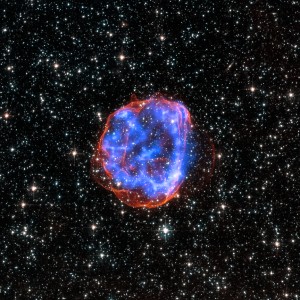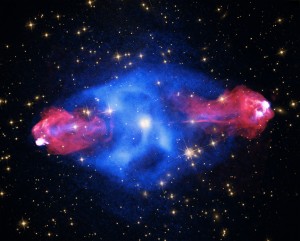Chandra Celebrates the International Year of Light by Janet Anderson and Megan Watzke.
From the webpage:
The year of 2015 has been declared the International Year of Light (IYL) by the United Nations. Organizations, institutions, and individuals involved in the science and applications of light will be joining together for this yearlong celebration to help spread the word about the wonders of light.
In many ways, astronomy uses the science of light. By building telescopes that can detect light in its many forms, from radio waves on one end of the “electromagnetic spectrum” to gamma rays on the other, scientists can get a better understanding of the processes at work in the Universe.
NASA’s Chandra X-ray Observatory explores the Universe in X-rays, a high-energy form of light. By studying X-ray data and comparing them with observations in other types of light, scientists can develop a better understanding of objects likes stars and galaxies that generate temperatures of millions of degrees and produce X-rays.
To recognize the start of IYL, the Chandra X-ray Center is releasing a set of images that combine data from telescopes tuned to different wavelengths of light. From a distant galaxy to the relatively nearby debris field of an exploded star, these images demonstrate the myriad ways that information about the Universe is communicated to us through light.
…
SNR 0519-69.0: When a massive star exploded in the Large Magellanic Cloud, a satellite galaxy to the Milky Way, it left behind an expanding shell of debris called SNR 0519-69.0. Here, multimillion degree gas is seen in X-rays from Chandra (blue). The outer edge of the explosion (red) and stars in the field of view are seen in visible light from Hubble.
Cygnus A: This galaxy, at a distance of some 700 million light years, contains a giant bubble filled with hot, X-ray emitting gas detected by Chandra (blue). Radio data from the NSF’s Very Large Array (red) reveal “hot spots” about 300,000 light years out from the center of the galaxy where powerful jets emanating from the galaxy’s supermassive black hole end. Visible light data (yellow) from both Hubble and the DSS complete this view.
There are more images but one of the reasons I posted about Chandra is that the online news reports I have seen all omitted the most important information of all: Where to find more information!
At the bottom of this excellent article on Chandra (which also doesn’t appear as a link in the news stories I have read), you will find:
For more information on “Light: Beyond the Bulb,” visit the website at http://lightexhibit.org
For more information on the International Year of Light, go to http://www.light2015.org/Home.html
For more information and related materials, visit: http://chandra.si.edu
For more Chandra images, multimedia and related materials, visit: http://www.nasa.gov/chandra
Granted it took a moment or two to insert the hyperlinks but now any child or teacher or anyone else who wants more information can avoid the churn and chum of searching and go directly to the sources for more information.
That doesn’t detract from my post. On the contrary, I hope that readers find that sort of direct linking to more resources helpful and a reason to return to my site.
Granted I don’t have advertising and won’t so keeping people at my site is no financial advantage to me. But if I have to trap people into remaining at my site, it must not be a very interesting one. Yes?

